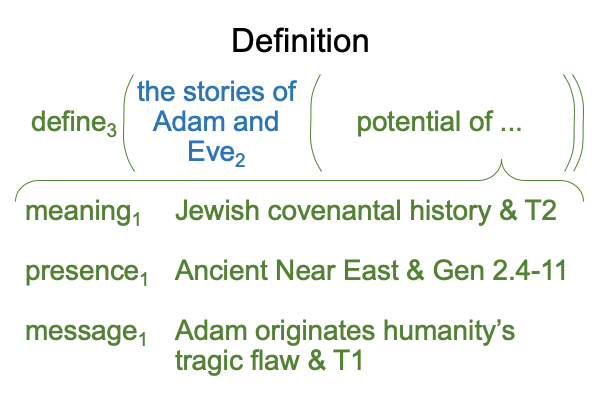0044 Does the prior blog indicate that I dismiss all of Part 3?
The answer is, “Yes, it does, even though Craig spends a lot of time and effort, including questioning scientific researchers, constructing the argument that Homo heidelbergensis may be the ancestor to anatomically modern humans, Neanderthals and Denisovans.”
Why?
Craig imagines that they may be the first human beings.
The problem?
Adam and Eve are not the first human beings. Rather, they originate humanity’s tragic flaw.
0045 This thesis corresponds to the message1 that underlies the actuality of the stories of Adam and Eve2, within the normal context of definition3.

0046 Part Two of Craig’s book addresses Biblical witness. Clearly, the stories of Adam and Eve concern a relatively recent prehistoric event, occurring in southern Mesopotamia, at the start of the Ubaid archaeological period.
0047 What is the nature of that event?
0048 This question associates to the presence1 underlying the stories of Adam and Eve2, including the ancient Near East and the text of Genesis 2.4-11.
This question also associates to the message1, combining a claim and a trend. The claim is that Adam and Eve originate humanity’s tragic flaw. The trend is humanity’s tendency to destroy what God has made good.
Both presence1 and message1 are couched in myth. What is myth? Myth both memorializes and veils the historical events tied to Adam’s deeds. The historical Adam associates to a real event that is wrapped in myth.
0049 Ah, is that not the nature of history?
Even so-called “modern histories” contain real events wrapped in myths.
0050 In Part Two, Craig refines the presence1 and message1 underlying the stories of Adam and Eve.
